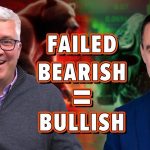Silver is a highly sought-after precious metal that has been cherished for its beauty and value throughout history. Investors, collectors, and industrial users all keep a keen eye on the silver market to track its price movements and make informed decisions. The price of silver is influenced by various factors, including supply and demand dynamics, geopolitical events, economic indicators, and market speculation. Over the years, the price of silver has experienced significant fluctuations, reaching both remarkable highs and lows.
Axel Adams explores the highest price for silver, updated for 2024, shedding light on the historical peaks that the precious metal has achieved. The article delves into the factors that have contributed to these price surges and analyzes the implications for investors and the broader market.
The Global Financial Crisis of 2008 had a profound impact on the price of silver, sending it soaring to record levels. As investors sought safe-haven assets amid the economic turmoil, the demand for silver surged, driving its price to unprecedented heights. In 2011, silver reached its highest price in modern history, peaking at around $49 per ounce. The combination of factors such as market speculation, currency devaluation, and inflation concerns fueled the rapid ascent of silver prices during this period.
The price of silver is also influenced by industrial demand, as the metal is widely used in various sectors, including electronics, solar panels, and medical applications. The increasing adoption of renewable energy technologies has further boosted the demand for silver, driving its price higher. Additionally, silver’s status as a store of value and a hedge against inflation has bolstered its appeal among investors looking to diversify their portfolios and protect against economic uncertainties.
In recent years, silver prices have exhibited volatility, reacting to shifts in market sentiment, geopolitical events, and macroeconomic trends. The impact of the COVID-19 pandemic on global supply chains and economic activity has also affected the price of silver, leading to both fluctuations and new opportunities for investors.
As Axel Adams highlights in the article, staying informed about the factors that drive silver prices is essential for anyone with an interest in precious metals investing. By understanding the historical price trends and the fundamental drivers of silver, investors can make informed decisions and navigate the dynamic landscape of the precious metals market.
In conclusion, the price of silver has experienced significant fluctuations over the years, reaching remarkable highs and lows driven by various factors. The highest price for silver, updated for 2024, reflects the complex interplay of supply and demand dynamics, investor sentiment, and macroeconomic factors. By closely monitoring these trends and staying informed about the forces shaping the silver market, investors can position themselves to capitalize on opportunities and navigate the inherent risks of investing in precious metals.



